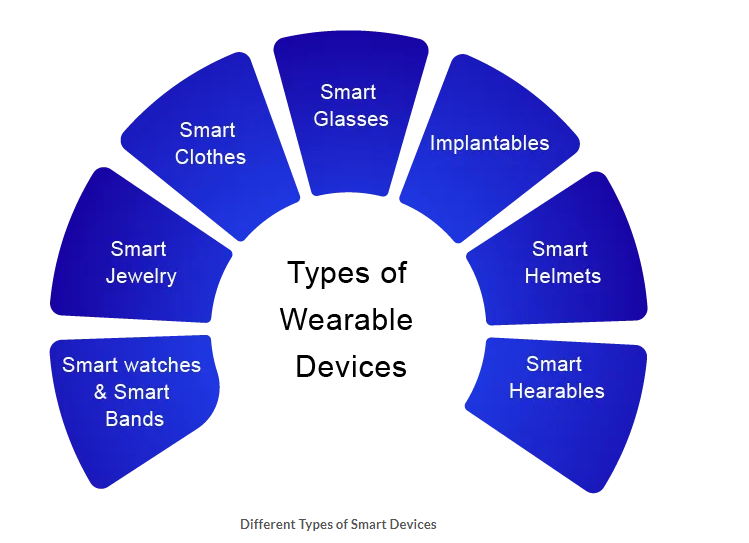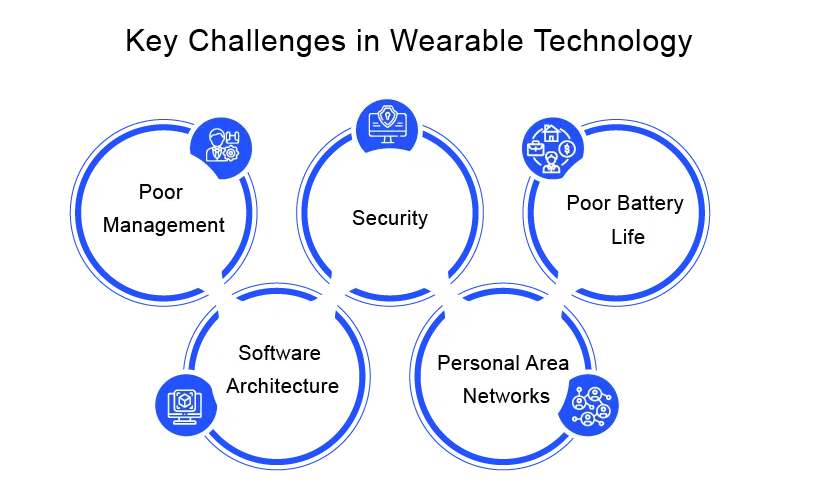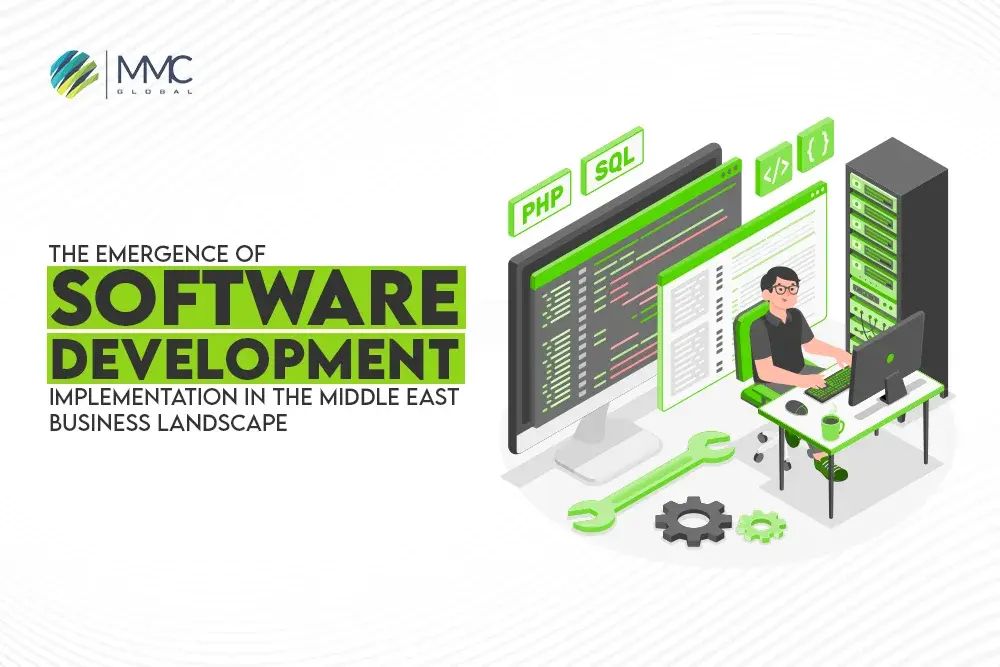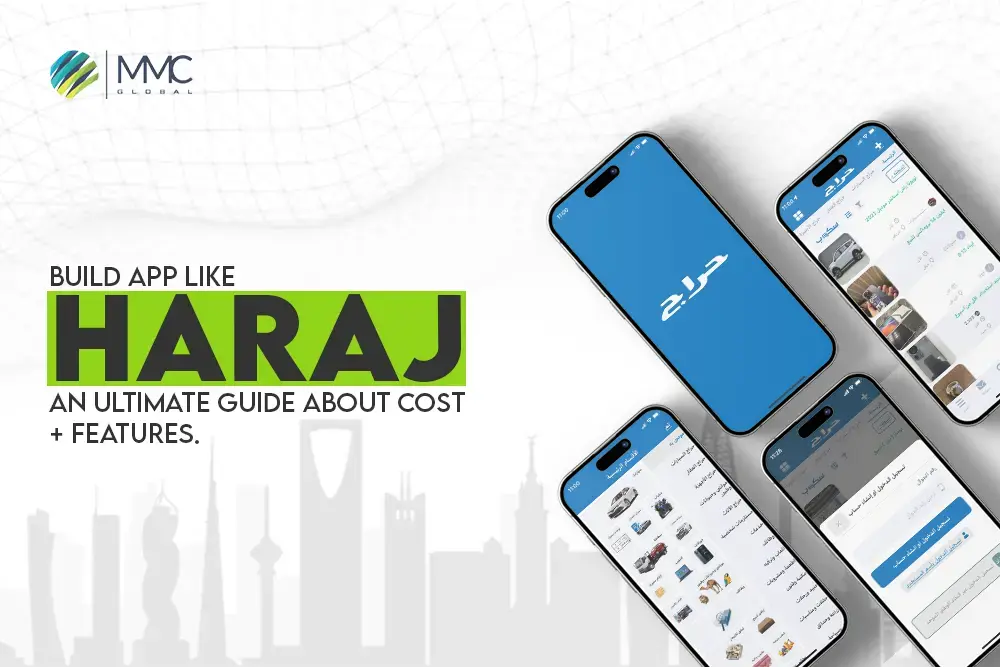Wearable app development has been revolutionizing the tech industry and gives leverage to other sectors by using it. The concept of wearable applications and devices in this cutting-edge market turned 360 degrees by enhancing user experience, tracking and monitoring facilities, and other major healthcare and sports industry benefits.
Mostly the development of wearable applications is done by the leading software and mobile application development companies. They also follow an illustrated way of wearable app development to successful outcomes with respect to the requirements.

Like MMCGBL, where software development is an everyday task, and their developers are never tired of generating new mobile app development ideas, it can help you in a better way. We are experts in Mobile app development, especially wearable app development.
We follow a streamlined way of assigning tasks to the team and gathering ideas through studying competitors’ products, finding the gap between existing features and others that can be included for improvement, the inclusion of uniqueness to make a different thing from others, etc.
Moreover, we have done 800+ projects and helped over 50+ startups in the USA and other countries. In addition, our successful project is proof of our abilities to handle complex projects that you can see on our website.
Our developers and designers work closely on every project, follow major to minor steps of the product development cycle, and check off each corner of the final product. As a result, we do not get bone to prick from our clients, but they show affection for our wearable app development services.
Following steps in the development process is essential and significant for wearable app development. Let’s look at how wearable app development can be successful if you follow step-by-step development procedures.
Step-by-Step Guide For Wearable App Development
Put All Ideas On the Table
Identifying the objective of wearable app development to explore ideas. If you are thinking of building an app that can help you remember medicine time, then thinking about a little bit more features makes your app development meaningful. There are loads of ideas that we just need to think about them.
Researching and idea-generating is your cup of tea; you can pour all your thoughts on the same page and get help from your employees or surroundings who can think differently. You don’t know who has the great idea under their head. Maybe some great ideas can match your goal of wearable app development.
Set out the budget you can invest in your wearable app development as well as what you can drive the outcome with your app development. All should be clear before going to the next step!
Hire Potential Team Members
Right after deciding what you need, you have to allocate resources that can help you in building an effective app. The more you can consider outsourcing your project because it cuts down the cost of hiring a pool of team members.
Outsourcing projects to a leading company like MMCGBL will help you assist on every step, such as choosing the right tech stack, competitor analysis, platform identification, designing and development process, etc. As the outsourcing company must have professionals and experts in developing wearable app development, you will never regret it.
Moreover, they provide quality work as an app development agency that aims to deliver satisfactory wearable app development services no matter how complex your project is. In addition, once your project is done, you will not need to pay for a lot of research. Instead, you can get support and maintenance services from the same company for fewer charges.
Check out the Market and Your Competitors
Competitor analysis is one of the keys that can open various doors to ideas. When you research the market, you ultimately understand the mass’s needs and preferences. For instance, the use of glucose monitors widely increases as the number of diabetic patients increases.
You can also hire a research analyst that assists you in identifying the market trends and competitors’ roadmap. Additionally, research analysts can facilitate strategic planning to give a competitive edge and build market positioning. It is said that 69% of firms get external help to conduct in-depth research to obtain accurate data insights.
Therefore, market research and competitor analysis can help you improve your product, discover growth opportunities, attract new customers, and much more.
Select Wearable App Type
There are three types of Wearable apps that you can develop. Choose the best fit that can meet your wearable app development goal.
Standalone
This particular wearable app uses a direct internet connection to operate on the wearable device on its own.
Companion App
Companion wearable apps work in conjunction with mobile applications. This app type enables data synchronization with smartphone applications that track all daily activities via wearables, such as step count, daily run, heart rate, glucose level, etc.
Platform choice
Choose between the iOS and Android platforms based on your company’s needs, then choose your app type to prevent pointless work.
Designing and Prototyping
The process of designing is the initial step when we are on board any project. At this point, we need UI UX designers that can deliver a high-quality user interface by understanding requirements. The user interface is directly proportional to the user experience. If you fail to deliver a quality user interface, you fail to provide a better user experience.
UI UX design should take a smooth design workflow to adjust all the main features of the app. Wearable app development can have limited features, but adjusting for wearable devices could be difficult. Here are UI UX designing skills that can only be delivered by professional UI UX designers.
They are following steps that all designers should consider while building the UI of wearable app development.
- Gather client requirements and suggest if any changes are required.
- Conduct research on what should be added to make the app more functional.
- Create a well-organized draft of the user flow.
- Start building low-fidelity wireframes to showcase the dummy user interface.
- Choosing a wireframe tool to implement accepted wireframe design. The best wireframe tools are:
- Creating a high-fidelity design with the help of a wireframe tool
- Turn high-fidelity design into prototyping to give a closer look at the final product.
- Test your UI design to ensure the design functionality and a better and improved user experience throughout the app.
- Last but not least, you are ready to deliver UI design to the development team for further process.
Read more: 5 Secrets to UI UX Design While Mobile App Development
Start Wearable App Development
It is the best art for the development side after managing the design. Now it’s time to make UI UX design functional in real-life with the help of coding. In this step, you need a highly professional native for cross-platform developers as per your wearable app development type selection.
The development process of any app comprises three major components: backend, frontend, and API integrations. The tech stack will be chosen for the backend and frontend to assign projects to expert developers.
Developers must have great knowledge of the whole design to make it functional with the codebase. Backend and frontend teams work closely together to achieve the collective goal. Backend development is split into two integral sections 1) database and 2) serverside.
These two major components refer to the backend supporting the overall mobile app. Moreover, the frontend development is the client side view which means the actual appearance of an app that users see on their mobile phones. The frontend development elements are the images, content, CTAs, chat windows, display, usability, browser capability, SEO, etc.
On the other hand, the application programming interface (API) serves as a conduit between the wearable software and the backend server.
Read more: Wearable Application Development – A Rising Technology In 2022
Testing Stage
The wearable application development is a complex yet exciting task to evaluate whether the development goes right or wrong. Testers and the QA team come into the frontline to analyze bugs and flaws in wearable applications. The testing of any software and application development is done thoroughly by the SQA tester teams. They create test cases and other fully organized documentation to ensure the functionalities of any feature.
In general, there are multiple testing methodologies and approaches that proficient testers know, and they use them in the whole development process. The testing approaches can be classified into five major stages:
- Functional testing helps identify an app’s overall coverage, such as connectivity, notifications, data gathering, user experience, and all features functionalities.
- Usability testing helps identify the end-user experience of your wearable application.
- Localization testing – evaluate your wearable app with respect to the demographic of specific or general localities.
- Load and performance testing – It helps analyze the app’s speed and performance. Is the app faster and quicker?
- Security testing – It ensures the app and user details security, such as general information, logins, passwords, etc.
Ready to Launch
Your wearable app is ready to be launched on Google Play Store, and Apple App Store after the testing phase is complete. By registering for an account, you can now publish your wearable app to any platform.
Add app pictures next, then describe the app in-depth with a catchy title. Don’t forget to update your wearable app depending on user feedback if you want many downloads for your app and increased income generation.
Read more: How To Upload An App On The Google Play Store
5 Major Wearable App Development Issues That You Need To Oversee

Developers face five major challenges in terms of design and development.
Screen Size
The screen of wearable devices is small, way too small. Developers must redefine the user experience strategy according to the size of the screens. Making one control button to access multiple options is challenging for developers.
Non-Standardized Connections
Wearable app development is based on third-party connectivity such as wi-fi or Bluetooth. To strengthen your connection, establish a strong connection with less battery consumption, and connect devices if the user allows it.
Battery Consumption
Ideally, a wearable device should give at least 24hrs battery backup. A 600-800 mAh battery is sufficient to occasionally display some messages and remote audio tracks, but not continuously.
Wearable App Localization
Local fonts are a completely different issue that is included in this list. The inability to utilize popular local typefaces on small displays is a very frequent occurrence. Translations from English to Japanese or various Cyrillic languages are absolute examples.
Multi-platforms Upgradation
Continuously updating versions on multiple devices can impact your whole wearable app development. iOS throws more rapid update versions than android, and it causes instability in wearable apps. The developers must be ready to update the app as soon as receiving operating system versions.
Bottom Line
Wearable applications are promising, and it empowers wearable application development drastically. The growing business of wearable app development gives a wide range of opportunities to the tech industry. You can generate ideas, sharing with your team, start working on them and throw them in the real world because people need them to track their body, working environment, and much more.
Until now, few wearable app development ideas are circulating around the world, such as monitoring health apps, workout wearable apps, entertainment apps, etc. Explore more ideas and help the world with your innovations. Get engaged with us, and we will help your ideas be converted into real-life examples.
FAQs Related to Wearable App Development
What is the estimated amount of wearable app development?
It depends on app complications, such as what functionality you need. Define the project scope to your hiring company and let them tell you the budget. If you need cost-effective wearable app development, MMC GBL will never disappoint you.
What Justifies Investing in Wearable Apps?
The market reach of wearable apps is rising in the sky in 2022. Wearable apps have a bright future and will continue to grow in popularity. The emergence of smartwatches is primarily driving the wearable market since they greatly assist users in tracking their daily physical activities, monitoring heart rate, tracking position using GPS, and more.
What are the key trends in wearable app development?
- IoT integration
- e-Payment via wearable
- GPS wearable
- Smartwatches



